DIRECTED BY ALFONSO CUARÓN, THE FILM HAS TURNED THE ARCHITECTURE AND THE CITY OF COLONIA ROMA INTO A VERY MUCH LIVING AND RELATABLE CHARACTER IN SUCH A BEAUTIFUL AND CAPTIVATING MANNER
TEXT: PONGTHORN SANGTHONG
PHOTOS COURTESY OF NETFLIX
(For English, please scroll down.)
Alfonso Cuarón ทำหนังไซไฟอวกาศเรื่อง Gravity ในปี 2013 โดยมีตากล้องคู่ใจอย่าง Emmanuel Lubezki รับหน้าที่กำกับภาพ Cuarón ได้รับรางวัลผู้กำกับยอดเยี่ยม ขณะเดียวกัน Lubezki ก็ได้รางวัลกำกับภาพยอดเยี่ยมด้วยเช่นกัน เมื่อ Cuarón ตัดสินใจกลับมาทำหนังในเม็กซิโกบ้านเกิดของเขา เขาจึงชวน Lubezki เพื่อนซี้มาช่วยทำหน้าที่กำกับภาพเหมือนเคย ทว่าก่อนเริ่มการถ่ายทำไม่นาน Lubezki ถอนตัวเพราะตารางเวลาไม่ตรงกัน Cuarón จึงเข้ามานั่งแท่นกำกับภาพด้วยตัวเองควบไปกับหน้าที่ผู้กำกับ ซึ่งเป็นเรื่องที่ดีเมื่อคำนึงว่า Roma เป็นภาพยนตร์ที่ผุดพรายมาจากความทรงจำสมัยเด็กของเขาเอง จะมีใครที่ถ่ายทอดความทรงจำนั้นออกมาเป็นภาพเคลื่อนไหวบนจอได้ดีกว่าตัว Alfonso Cuarón เองอีกล่ะ
Roma เริ่มสตรีมมิ่งบน Netflix ตั้งแต่ 14 ธันวาคม 2018 ซึ่งในช่วงต้นปีก่อนหนังเรื่องนี้ก็กลายเป็นประเด็นที่เมืองคานส์เนื่องจากทางเทศกาลตัดสิทธิ์ไม่ให้หนังใน Netflix ลงประกวด กลับกันในช่วงปลายปี Roma กลายเป็นตัวเก็งที่ไม่น่ามีใครโค่นในสาขาภาพยนตร์ต่างประเทศ (จากเม็กซิโก) บนเวทีออสการ์ และอาจไปไกลถึงขั้นชนะรางวัลภาพยนตร์ยอดเยี่ยม หนังเล่าเรื่องราวเกี่ยวกับ Cleo (Yalitza Aparicio) สาวใช้เชื้อสาย Mixtec (ชาวอินเดียนพื้นเมืองในเม็กซิโก) ในบ้านของผู้มีอันจะกินย่าน Colonia Roma แถบชานเมืองเม็กซิโกซิตี
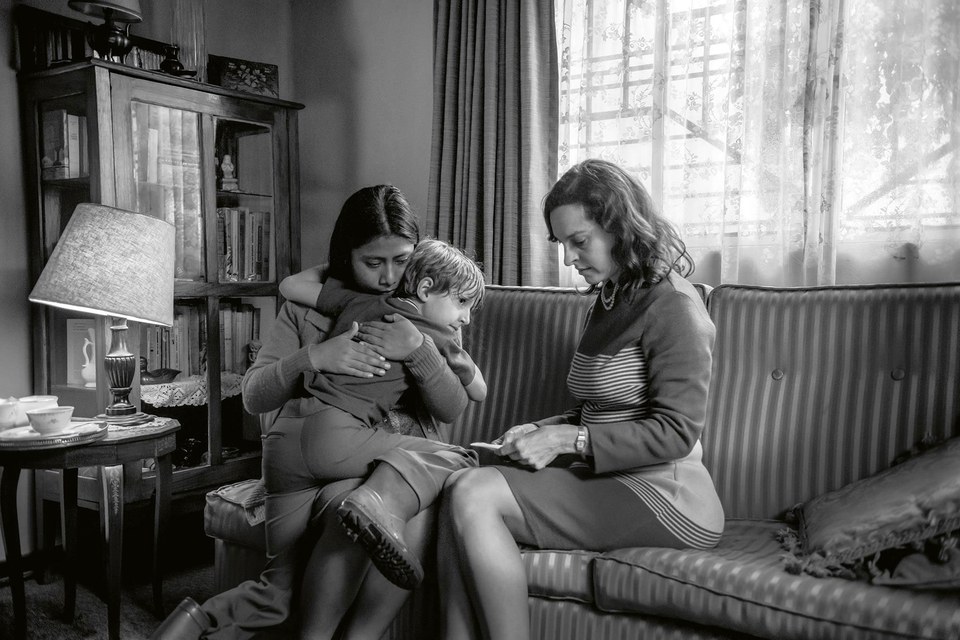
หนังเล่าความซับซ้อนระหว่างชนชั้นได้อย่างมีมิติ นี่ไม่ใช่แค่หนังที่ว่าด้วย “คนรวยกดขี่คนจน” ตัวละคร Cleo มีสถานะเกือบจะเป็นคนในครอบครัวของนายจ้างด้วยซ้ำ แต่ก็ยังไม่ใช่คนในเต็มตัวเสียทีเดียว เราจะได้เห็นว่าบางครั้งเมื่อนายจ้างของเธออารมณ์ไม่ดี เธอก็โดนตวาดใส่เหมือนกัน แต่เวลาพวกเขาดีกับเธอก็ดีใจหาย ซึ่งหนังอาศัยภาวะ “คนนอกก็ไม่ใช่ คนในก็ไม่เชิง” สำรวจบ้าน สถาปัตยกรรมอื่นๆ รวมถึงเมืองที่เป็นฉากหลังได้อย่างชาญฉลาด
บ้านเลขที่ 21 ถนน Tepeji ย่าน Roma Sur ที่เป็นที่พักอาศัยหลักของตัวละครนั้นตั้งอยู่บริเวณชานเมืองเม็กซิโกซิตี ที่ตั้งของบ้านหลังนี้เหมาะที่จะสร้างเรื่องเล่าขนานไประหว่างคนรวยและคนจน ขอบเมืองอย่างย่าน Roma แห่งนี้เป็นที่พักของคนรวยที่จะเข้าไปทำงานในเมือง ขณะเดียวกัน หลังจาก Cleo เสร็จงานในบ้านของนายจ้าง เธอก็พร้อมจะไปมีชีวิตและเรื่องราวในย่านของอีกชนชั้นหนึ่ง
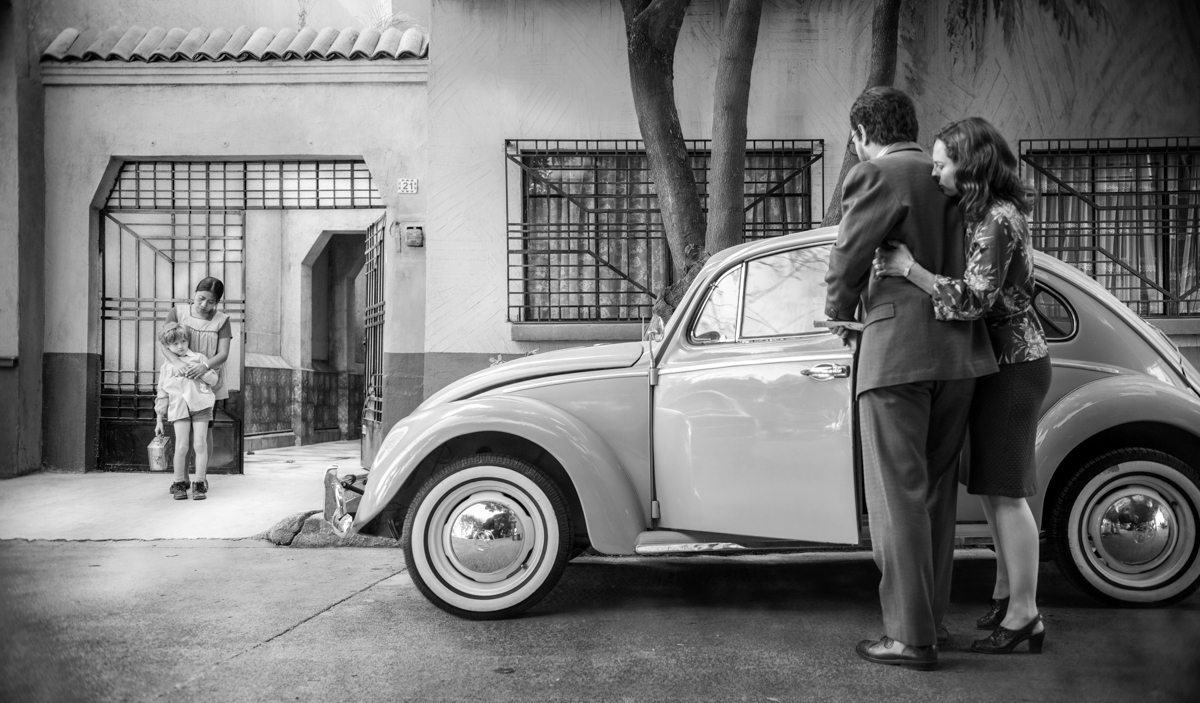
ตัวบ้านที่สร้างอย่างบ้านชาวเม็กซิกันทั่วไป คือมีลักษณะคล้ายบ้านแถวเรียงชิดกัน กำแพงสูง หน้าต่างและช่องเปิดน้อยเพื่อป้องกันฝุ่นเข้าบ้าน ช่วยส่งเสริมความรู้สึกกำกวมระหว่างการเป็นบ้านอบอุ่นไว้พักพิง กับการเป็นกรงขังที่อึดอัดคับแคบได้อย่างดี (แคบจนเห็นว่าหลายครั้งบ้านนี้จอดรถกันยากเหลือเกิน) เราเห็น Cleo พอจะมีเวลาชีวิตของตัวเองเมื่อเธอขึ้นไปซักผ้าบนชั้นดาดฟ้าของบ้าน หรือออกไปเที่ยวเล่นในเมือง และวิธีการถ่ายภาพระหว่างในบ้านกับนอกบ้านก็ยิ่งส่งเสริมความรู้สึกเหล่านี้อีก กล้องถ่ายส่ายเวียนไปมาจนจบที่จุดเดิมขับเน้นอาการซ้ำซากของกิจวัตรประจำวันที่เธอต้องทำ และหลายครั้งที่กล้องจับจ้องไปที่ประตูหน้าบ้านคล้ายกับว่า Cleo รอเวลาที่มันจะเปิดเชื่อมพื้นที่ภายนอกบ้าง กลับกันกับการเคลื่อนกล้องอย่างมีชีวิตชีวาขนานไปกับนักแสดงที่กำลังวิ่งเลียบเคียงอาคารเก่าใหม่ในเมืองอย่างร่าเริง
การขับเน้นสัดส่วนจริงของที่ว่างในสถาปัตยกรรมเพื่อช่วยเล่าเรื่องเห็นได้เด่นชัดในหลายซีน ในหนังหลายๆ เรื่อง การถ่ายพื้นที่ภายในอาคารที่มีขนาดใหญ่ด้วยมุมกว้าง มักจะไม่ถูกใช้เมื่อนักแสดงพูดบทสนทนากัน แต่ใน Roma ซีนที่ Cleo สารภาพกับแฟนหนุ่มของเธอว่าเธอตั้งท้องในโรงหนัง กล้องจับสัดส่วน “สเปซ” จริงๆ ของโรงหนังโดยให้ Cleo กับแฟนของเธออยู่ด้านหน้าของภาพ ผู้คนทั้งหลายในโรงหนังก็ดำเนินชีวิตตามปกติต่อไป ในขณะที่พื้นหลังก็เป็นจอหนังที่มีหนังกำลังดำเนินเรื่องอยู่ เป็นความแยบคายในการใช้สเปซเล่าเรื่องว่า แม้เรื่องของ Cleo จะเป็นตัวเอก แต่เธอก็เป็นเพียงเรื่องเล่าในอีกหลากหลายเรื่องเท่านั้น
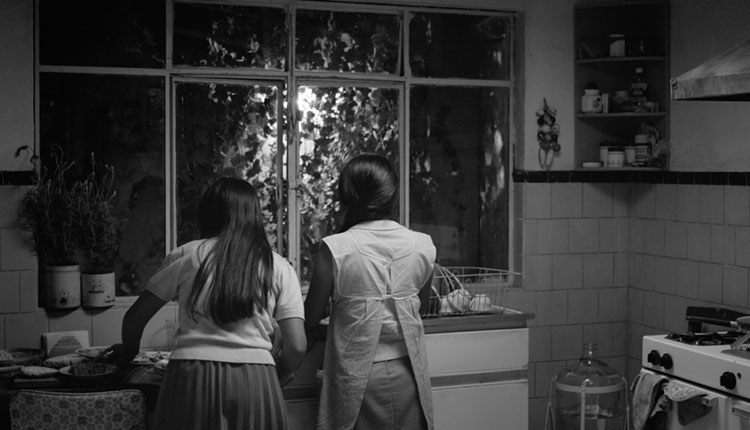
แม้สิ่งที่ Roma เลือกจะเล่า เป็นเพียงชีวิตที่ (เหมือนจะ) ธรรมดาของสาวใช้คนหนึ่ง แต่วิธีการใช้สเปซช่วยเล่าเรื่องของ Alfonso Cuarón นั้นโดดเด่นและซับซ้อน โดยตั้งใจหรือไม่ Roma ใช้สถาปัตยกรรมที่คนทำหนังรู้จักดี มาถ่ายทอดเป็นตัวละครที่มีชีวิตจับต้องได้อย่างงดงาม

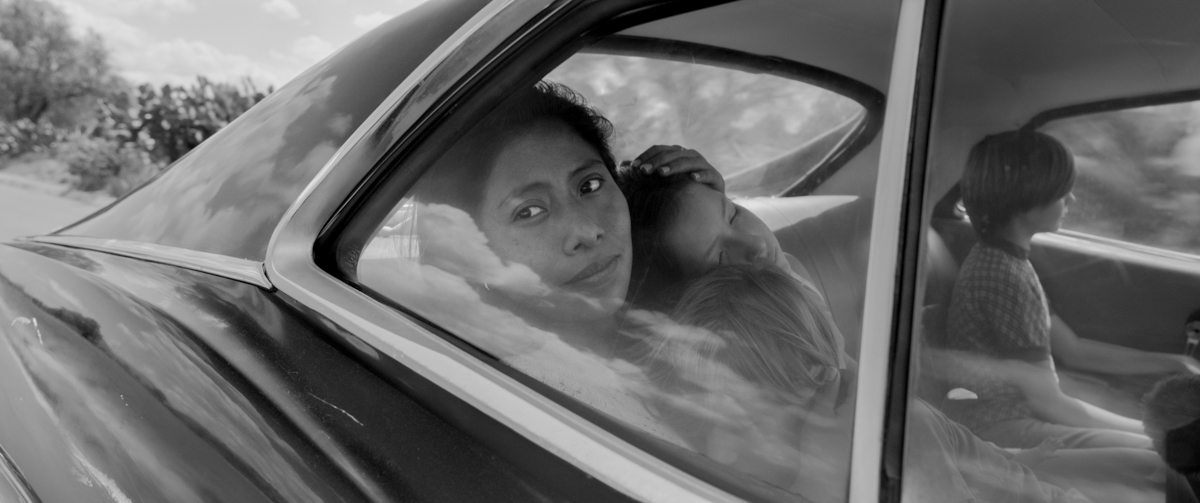
Alfonso Cuarón directed thrilling space sci-fi film Gravity in 2013 with his longtime cinematographer Emmanuel Lubezki and won himself an Oscar for best director while Lubezki brought home his own Best Cinematography award. When Cuarón decided to return to his motherland Mexico to direct a new film, he invited his best friend to be in charge of his new film’s cinematography but not long before the shooting started, certain scheduling issues prevented Lubezki from joining the project. Cuarón then took over his role, while also sitting as the film’s director, which became a good thing considering the fact that Roma is a film that originated from his own childhood memories. And for that matter, there wouldn’t be anybody else who could transpire such an intimate experience into a cinematic narrative better than Alfonso Cuarón himself.
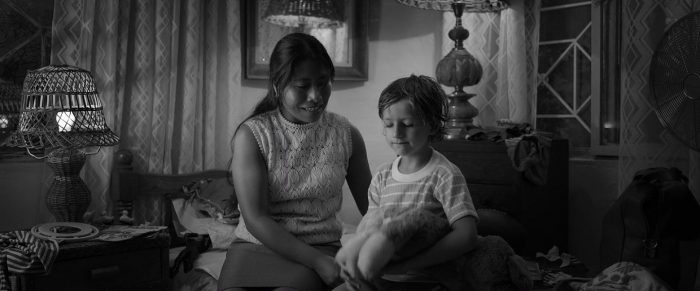
Roma began streaming on Netflix on the 14th of December 2018 and became an issue over at Cannes earlier that same year when the releasing rules prohibited the film from being screened at the festival. On the contrary, towards the end of 2018, Roma has become somewhat of an invincible nominee in the Best Foreign Language Film category (Spanish) at the Oscars and might go so far as to even win the Best Picture award. The film tells the story of Cleo (Yalitza Aparicio), a maid of Mixtec descent (an indigenous Indian tribe in Mexico) working for a wealthy family in a well-off area of Colonia Roma, a suburb of Mexico City.
The story is a moving and dimensional portrayal of the complexities of social class. This is a film that goes beyond depicting the poor’s suppression by the rich. The main character, Cleo, who despite practically being considered a member of the family, hasn’t been fully accepted into the social unit. Viewers see her being scolded when her employers are in a bad mood, while on a good day, being treated incredibly well. The film utilizes the ambiguity between the status of an outsider and an insider to explore the household, the architecture, as well as the city that plays its role as a main character in the film.
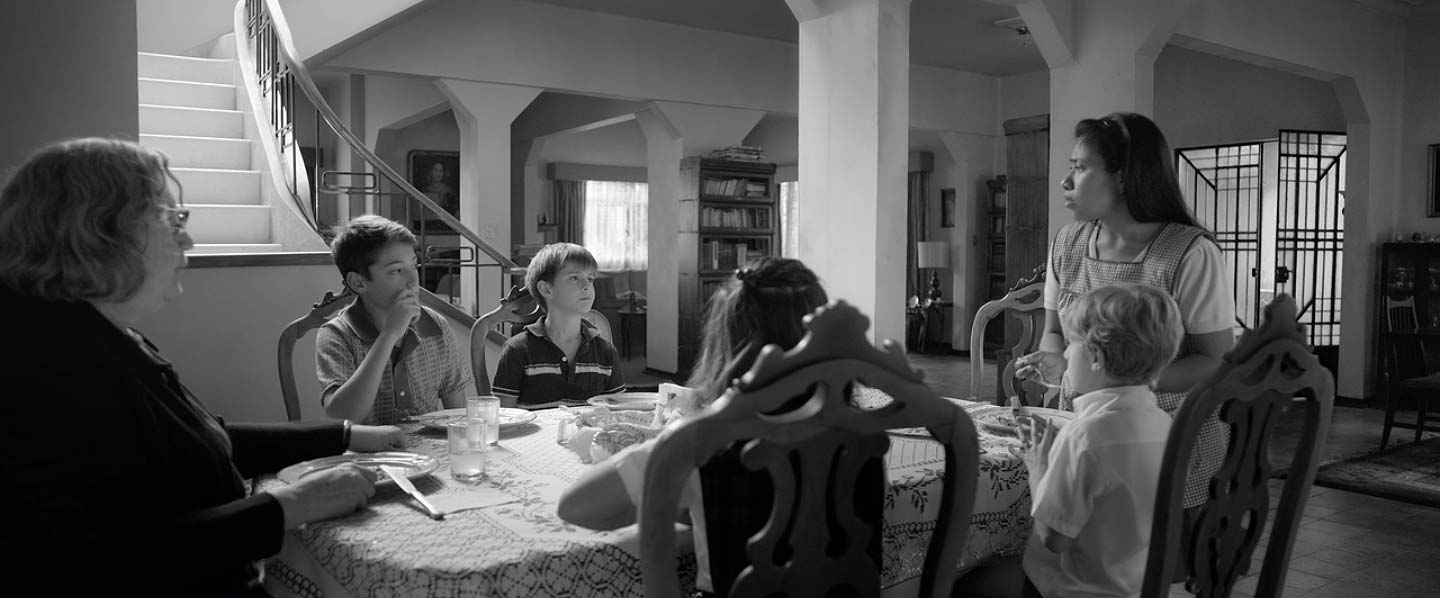
House at 21 Tepeji Drive in Roma Sur, a suburb of Mexico City, is the character’s main habitat. The location of the house is the perfect place to tell a parallel story between the rich and the poor. In this suburb, the upper class settles down as it was in a commutable distance to their workplace in Roma’s city center while Cleo continues her own life in another neighborhood occupied by another social class after her working hours are over.
The house is an ordinary modern Mexican home. The row house has high walls with only a few openings to prevent the dust from coming inside. Its architecture accentuates the ambiguous state of a home that offers comfort and a cage whose confined space gives an unsettling feeling of imprisonment (viewers are able to grasp the confinement of the space through the daily hassle over the parking space). We see how Cleo spends her personal alone time while she’s doing laundry on the house’s rooftop floor or enjoying a day strolling in the city. The cinematography is executed to highlight the differences between her life outside and inside that house. It repeatedly captures her daily routine and chores, and for several times, the camera stares unmoving at the front door of the house as viewers sense that it is perhaps Cleo waiting for the time for that door to open to the world outside. Then the scene cuts to the lively movements of the same character, as the camera captures her gleefully running passed the old and newly built structures in the city.

The cinematography’s focus on the actual scale of the architectural space contributes to the film’s storytelling and can be seen in various scenes. And while we don’t usually see a wide shot of the interior space when the characters are interacting, in Roma, in the scene when Cleo is confessing her pregnancy to her boyfriend when they’re inside a movie theatre, viewers see the two characters sitting at the foreground as other lives in that cinema continue their courses. The screening movie becomes the background as we see the director masterfully use the space to convey how Cleo, being the protagonist of the film and all, is just a story among many other different stories in this world.
Even though the story Roma chooses to tell is that of a (seemingly) ordinary life of a housemaid, Alfonso Cuarón, with great intrigue and complexity, devises the presence of spaces as a part of the film’s narrative. And whether such an attempt is intentional or not, the creator of Roma turns the architecture of the city he knows so well into a very much living and relatable character in such a beautiful and captivating manner.


